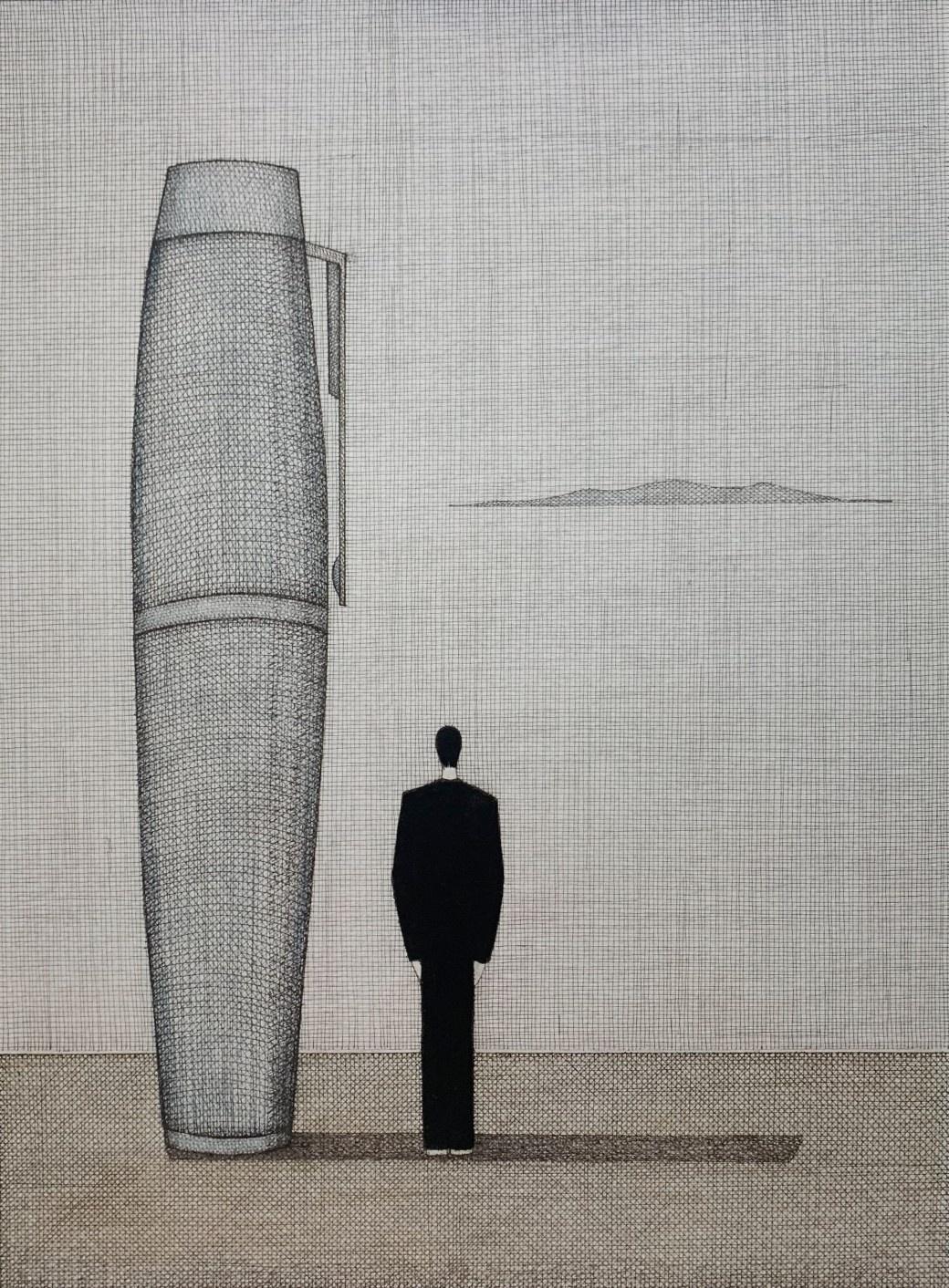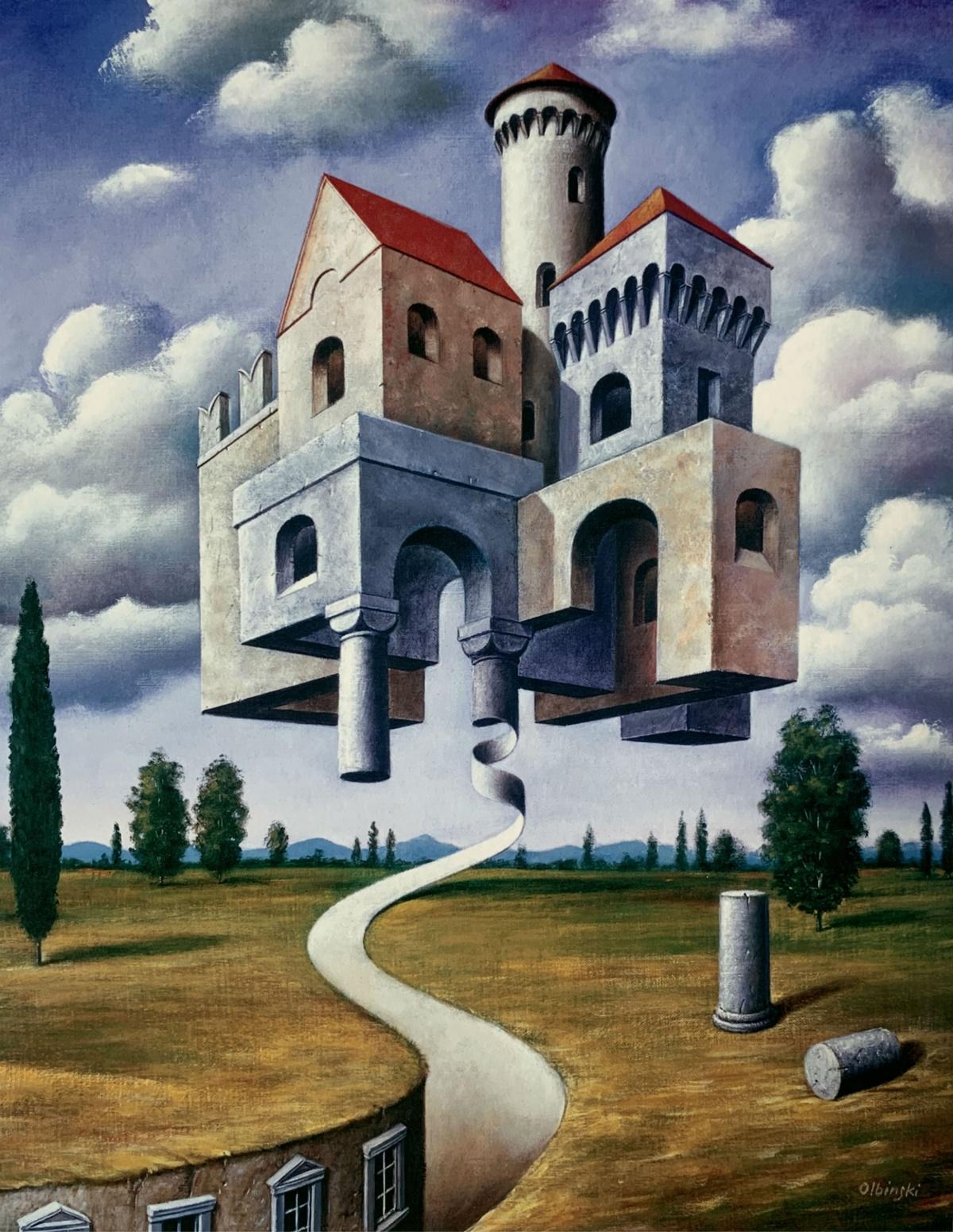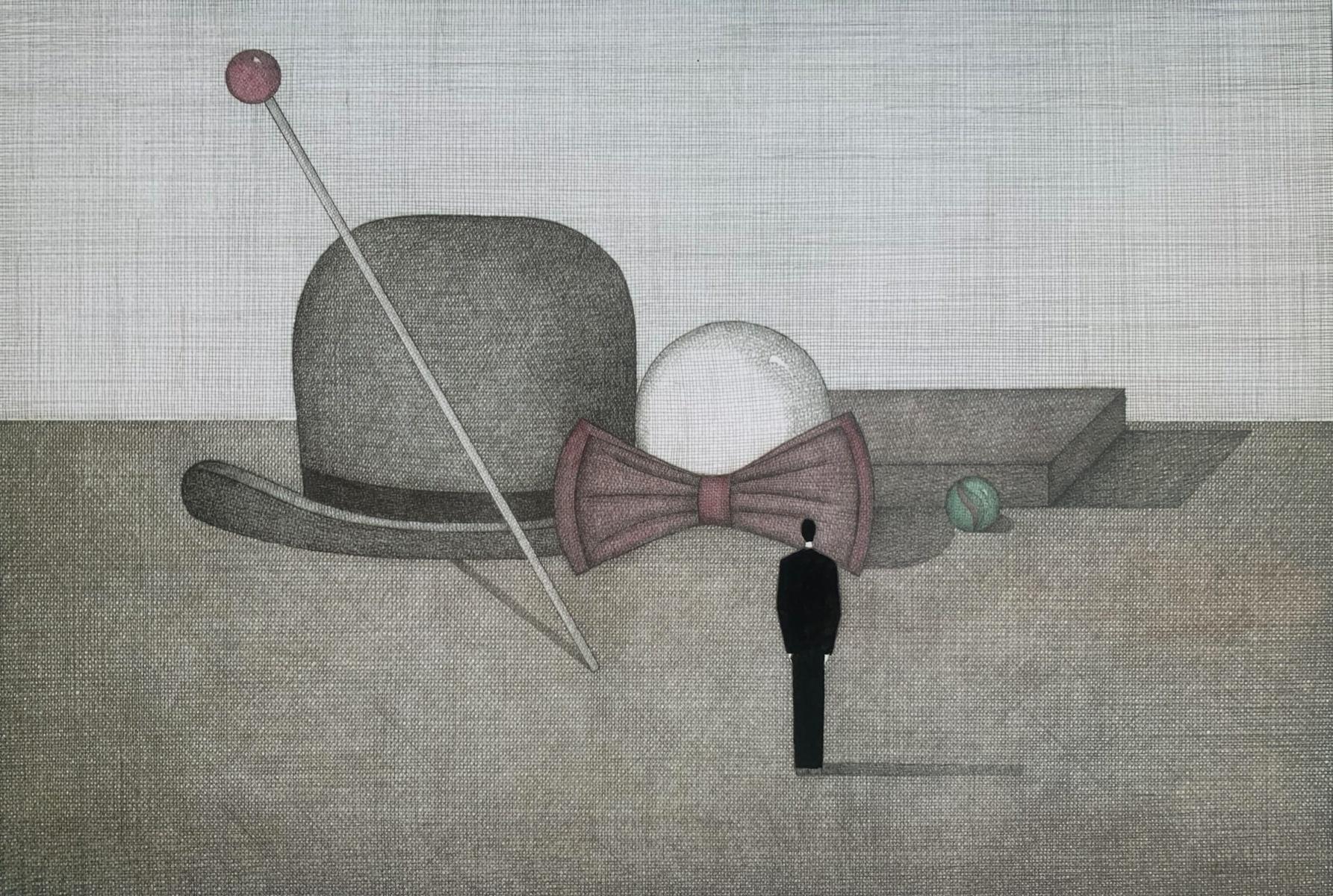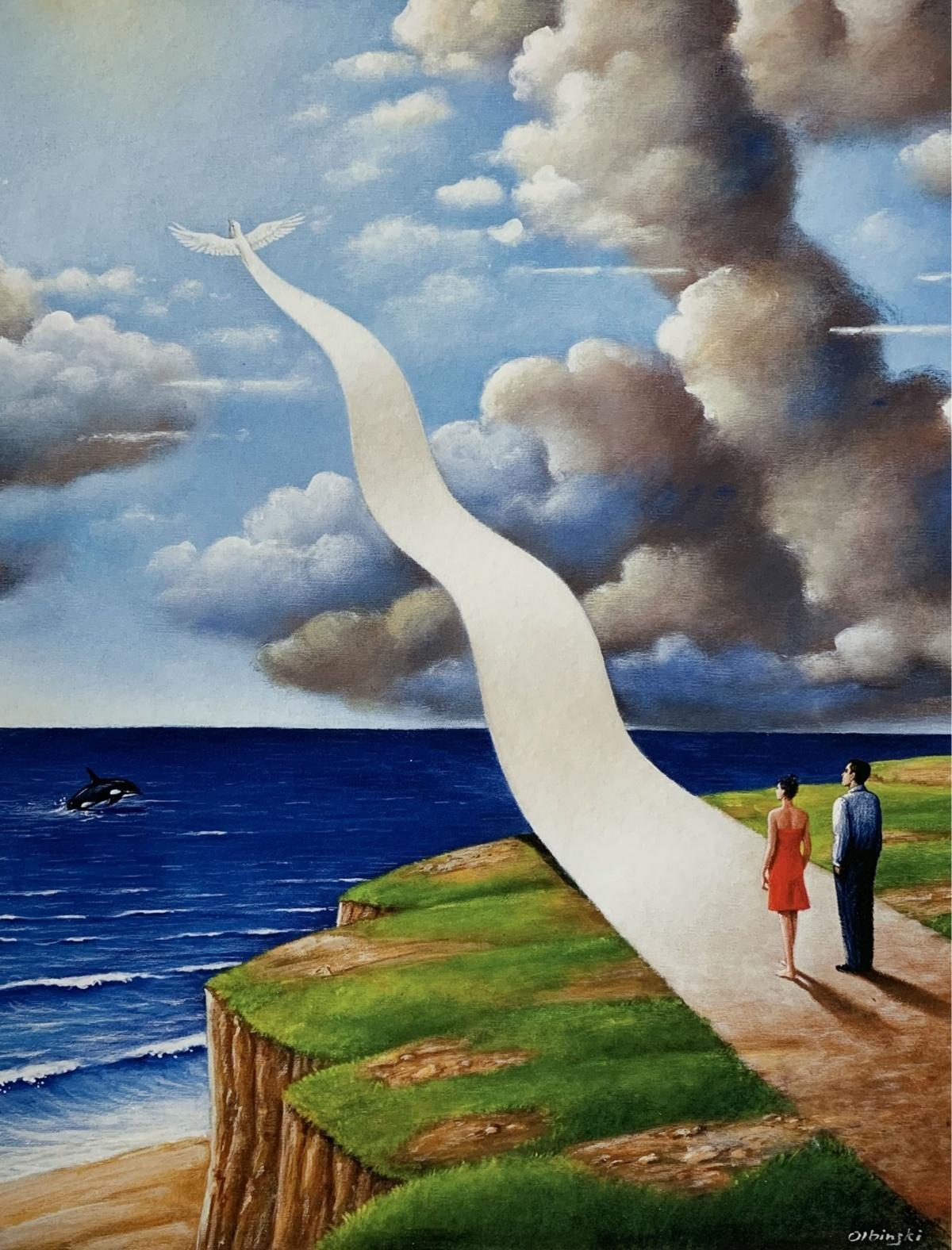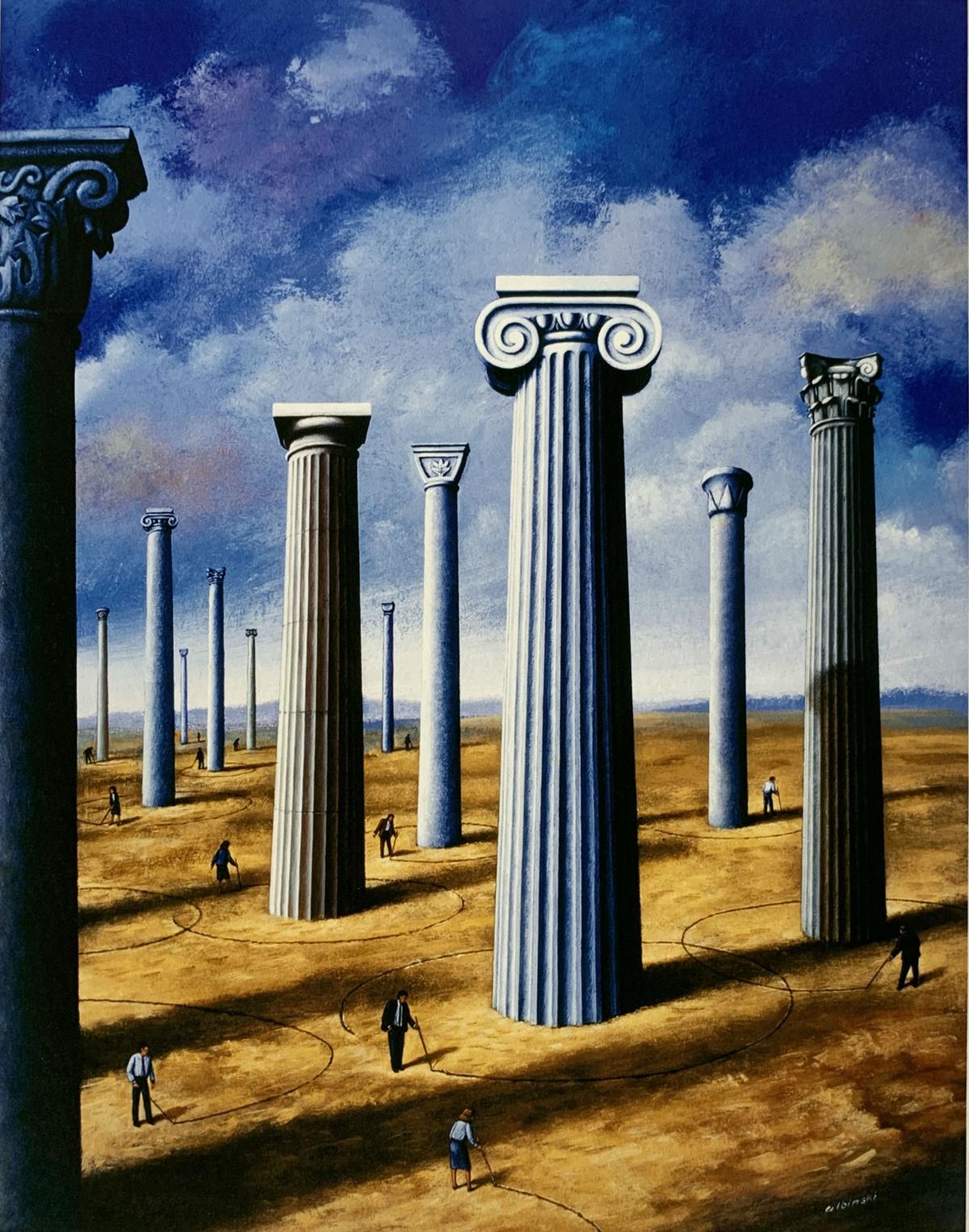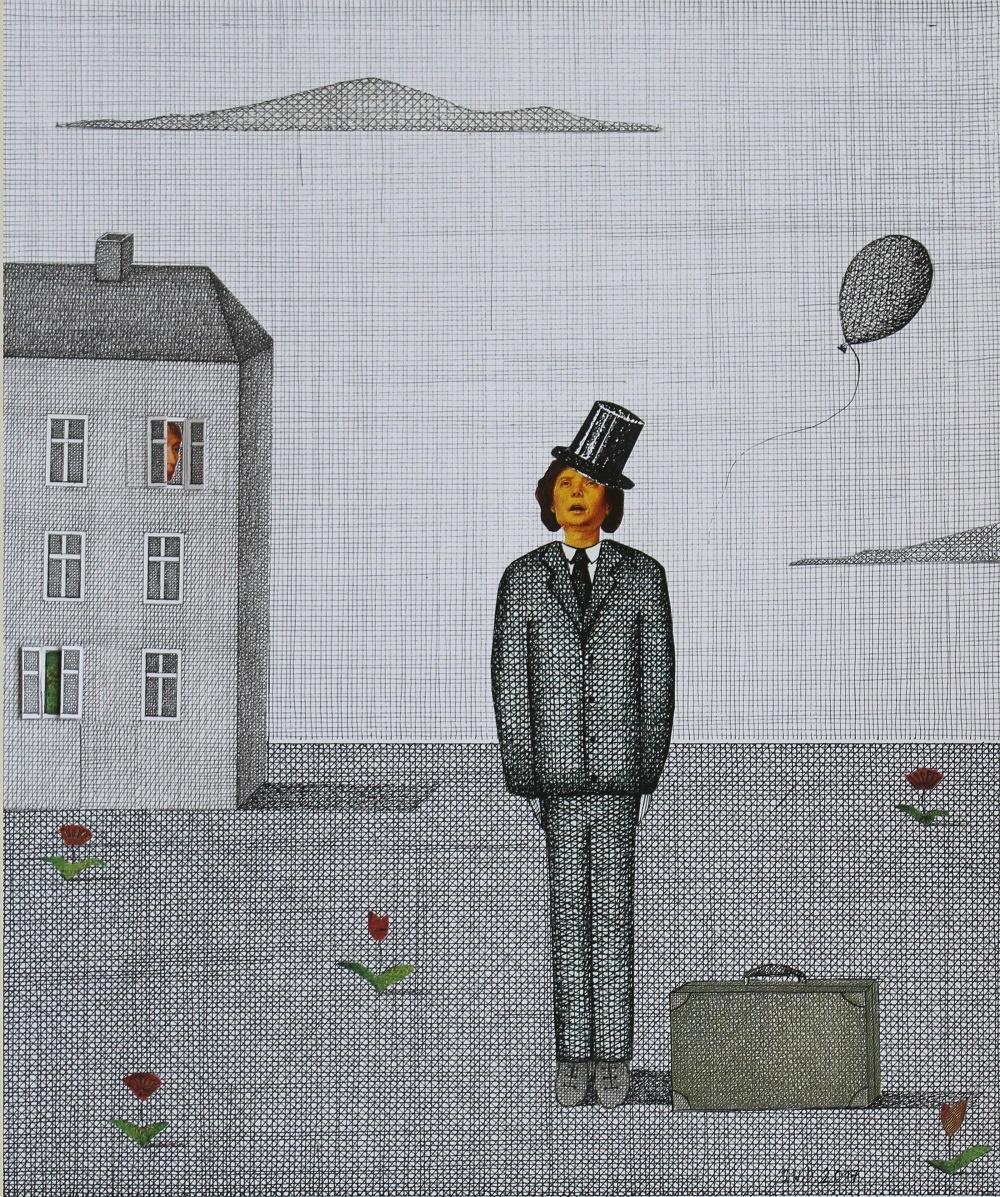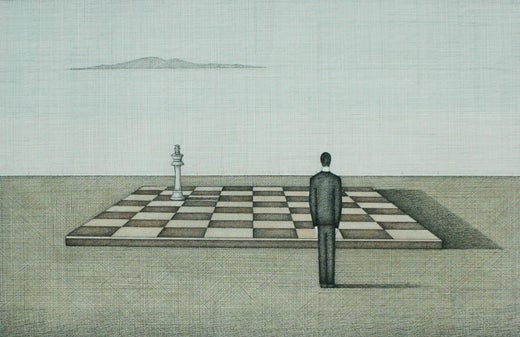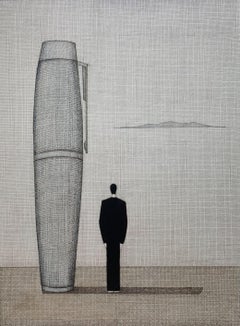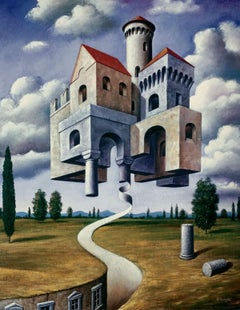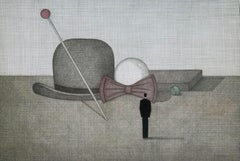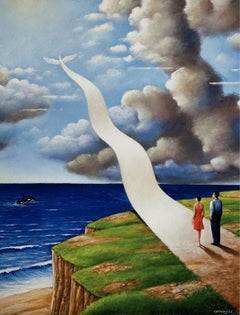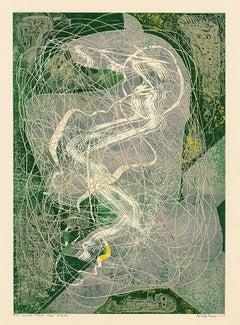Items Similar to Dream about escaping a maze - Figurative print, Surrealism, Minimalism
Want more images or videos?
Request additional images or videos from the seller
1 of 5
Joanna Wiszniewska-DomanskaDream about escaping a maze - Figurative print, Surrealism, Minimalism2019
2019
$376
$47020% Off
£287
£358.7520% Off
€320
€40020% Off
CA$530.36
CA$662.9520% Off
A$582.58
A$728.2220% Off
CHF 304.46
CHF 380.5720% Off
MX$6,947.74
MX$8,684.6820% Off
NOK 3,855.28
NOK 4,819.1020% Off
SEK 3,591.52
SEK 4,489.4020% Off
DKK 2,439.01
DKK 3,048.7720% Off
About the Item
Print is singed, dated and numered. It comes from limited edition of 50 copies
JOANNA WISZNIEWSKA DOMAŃSKA (born in 1946)
graduated from the Academy of Fine Arts, Faculty of Graphic Arts in 1972 at the atelier of professor Stanisław Fijałkowski. She works in the techniques of aquafort and aquatint. Her etchings are to be found in the collections of Museum of Contemporary Art in Lodz (the oldest contemporary art museum worldwide), Museum in Walbrzych and Museum of Couvin (Belgium), Miejska Galeria Sztuki in Łódź, National Library of Poland in Warsaw, Eugenio Granell Foundation in Santiago de Compostella and Artistic University in Tokio.
- Creator:Joanna Wiszniewska-Domanska (1946, Polish)
- Creation Year:2019
- Dimensions:Height: 11.03 in (28 cm)Width: 14.97 in (38 cm)
- Medium:
- Movement & Style:
- Period:
- Condition:
- Gallery Location:Warsaw, PL
- Reference Number:Seller: 146671stDibs: LU101019030272
Joanna Wiszniewska-Domanska
JOANNA WISZNIEWSKA DOMAŃSKA (born in 1946) graduated from the Academy of Fine Arts, Faculty of Graphic Arts in 1972 at the atelier of professor Stanisław Fijałkowski. She works in the techniques of aquafort and aquatint. Her etchings are to be found in the collections of Museum of Contemporary Art in Lodz , Museum in Walbrzych and Museum of Couvin (Belgium), Miejska Galeria Sztuki in Łódź, National Library of Poland in Warsaw, Eugenio Granell Foundation in Santiago de Compostella and Artistic University in Tokio.
About the Seller
5.0
Platinum Seller
Premium sellers with a 4.7+ rating and 24-hour response times
Established in 1987
1stDibs seller since 2018
524 sales on 1stDibs
Typical response time: <1 hour
- ShippingRetrieving quote...Shipping from: Warsaw, Poland
- Return Policy
More From This Seller
View AllPoet's dream - Figurative print, Symbolic Surrealism, Polish art
By Joanna Wiszniewska-Domanska
Located in Warsaw, PL
Print is singed, dated and numered. It comes from limited edition of 50 copies
JOANNA WISZNIEWSKA DOMAŃSKA (born in 1946)
graduated from the Academy of Fine Arts, Faculty of Graphic Arts in 1972 at the atelier of professor Stanisław Fijałkowski. She works in the techniques of aquafort and aquatint. Her etchings are to be found in the collections of Museum of Contemporary Art in Lodz (the oldest contemporary art museum worldwide), Museum in Walbrzych and Museum of Couvin (Belgium), Miejska Galeria Sztuki in Łódź, National Library of Poland in Warsaw, Eugenio Granell...
Category
Early 2000s Contemporary Figurative Prints
Materials
Paper, Color
The way home. Limited edition print, Surreal, Established Polish artist
By Rafał Olbiński
Located in Warsaw, PL
Size of sheet is ca. 21 x 29 cm (A4)
Contemporary figurative giclee print by Polish artist Rafal Olbinski. Print is signed, numbered and has a stamp of an artist's atelier. It comes...
Category
2010s Surrealist Figurative Prints
Materials
Color, Paper
A magician. Figurative print, Symbolic Surrealism, Polish art
By Joanna Wiszniewska-Domanska
Located in Warsaw, PL
Surrealistic figurative print by Polish artist Joanna Wiszniewska-Domanska. Artwork depictics a man dressed in black visible from the back. There are magician's accesories in front o...
Category
Early 2000s Contemporary Figurative Prints
Materials
Paper, Color
Conventional sentiment. Limited edition print Surreal Established Polish artist
By Rafał Olbiński
Located in Warsaw, PL
Giclee limited edition print by worldwidely established Polish artist Rafal Olbinski. Figurative surrealistic print with man and a woman standing on the road. The road is transformin...
Category
2010s Surrealist Figurative Prints
Materials
Paper, Color
Art of distance. Limited edition print, Surreal, Established Polish artist
By Rafał Olbiński
Located in Warsaw, PL
Size of sheet is ca. 21 x 29 cm (A4)
Contemporary figurative giclee print by Polish artist Rafal Olbinski. Print is signed, numbered and has a stamp of an artist's atelier. It comes...
Category
2010s Surrealist Figurative Prints
Materials
Color, Paper
A wind - XXI century contemporary figurative print & collage, Surrealism
By Joanna Wiszniewska-Domanska
Located in Warsaw, PL
print & collage
JOANNA WISZNIEWSKA DOMAŃSKA (born in 1946)
graduated from the Academy of Fine Arts, Faculty of Graphic Arts in 1972 at the atelier of professor Stanisław Fijałkowski...
Category
2010s Contemporary Figurative Drawings and Watercolors
Materials
Paper, Color
You May Also Like
'Sylvan Maze' — Mid-century American Surrealism
By Robert Vale Faro
Located in Myrtle Beach, SC
Robert Vale Faro, 'Sylvan Maze', color lithograph, 1946, edition 20. Signed, dated, titled and numbered '112' and '11/20' in pencil. A fine, richly-inked impression with fresh colors, on heavy, off-white wove paper; full margins (1 to 1 1/2 inch), in excellent condition. Image size 13 11/16 x 9 11/16 inches; sheet size 16 1/8 x 12 5/16 inches. Scarce. Matted to museum standards, unframed.
ABOUT THE ARTIST
Robert Vale Faro (1902-1988) was a modernist architect and artist associated with the Chicago Bauhaus. He received his degree in architecture and design from the Armour Institute in Chicago and worked at L'Ecole des Beaux-Arts, Paris, from 1924-27, where he was influenced by Harry Kurt Bieg and Le Corbusier. Upon his return to Chicago, Faro worked with the important modernist Chicago architects George and William Keck under Louis Sullivan.
Faro founded the avant-garde printmaking group Vanguard in 1945. The group counted Atelier 17 artists Stanley William Hayter, Sue Fuller...
Category
1940s American Modern Abstract Prints
Materials
Lithograph
Optimistic Overture, 2008
Located in Atlanta, GA
Rod Judkins is the bestselling author of Make Brilliant Work, The Art of Creative Thinking, Change Your Mind, and other books about creative thinking, culture, and psychology.
His books are available in over 15 languages. He has delivered talks and workshops on creative thinking at companies like Apple, Samsung, Bombay Sapphire...
Category
21st Century and Contemporary Modern Landscape Paintings
Materials
Oil
Inmate Work Project: Perpetual Construction and Dismantling of the Labyrinth
By Robert Morris
Located in Long Island City, NY
Artist: Robert Morris, American (1931 - )
Title: Inmate Work Project: Perpetual Construction and Dismantling of the Labyrinth from In the Realm of the Carceral
Year: 1978
Medium: Etc...
Category
1970s Conceptual Abstract Prints
Materials
Etching, Aquatint
The Maze - Original Acrylic Artwork on Canvas
By Ricky Hunt
Located in Los Angeles, CA
Ricky Hunt’s work is influenced by Egyptian hieroglyphs, graffiti, and his tumultuous past that led to a paradigm shift in his creative life. He covers the canvas with unique imagery...
Category
21st Century and Contemporary Contemporary Abstract Paintings
Materials
Canvas, Acrylic
Untitled - XIII, Framed Surrealist Lithograph by Wojtek Kowalczyk
Located in Long Island City, NY
Untitled - XIII
Wojtek Kowalczyk, Polish (1960)
Date: 2005
Lithograph, signed in pencil
Size: 19.5 in. x 13.5 in. (49.53 cm x 34.29 cm)
Frame Size: 21 x 18 inches
Category
Early 2000s Surrealist Figurative Prints
Materials
Lithograph
Carpet Labyrinth in Non-slip Polyester & Polyamide by Andrea Branzi
By Qeeboo, Andrea Branzi
Located in Brooklyn, NY
Genetic Tales carpet collection designed by Andrea Branzi features 15 unique designs in three different sizes: 200x300, 200x200 and 100x200. Each carpet explores the connection betwe...
Category
21st Century and Contemporary Belgian More Carpets
Materials
Polyester
More Ways To Browse
Don Brown Drawing
Dutch Paintings Birds
Ed Fairburn
Emile Gerard
Erte Pencil Signed
Exhibition Poster Man Ray
Exotic Animals Paintings
Fox Hunt Oil Paintings
French Open Tennis
George And Ira Gershwin
Gino Boccasile
Giraffe Oil Painting
Gore Vidal
Grevy Zebra
Grizzly Bear Painting
Hard Hat Vintage
Highland Stag
Horse Paintings British School
